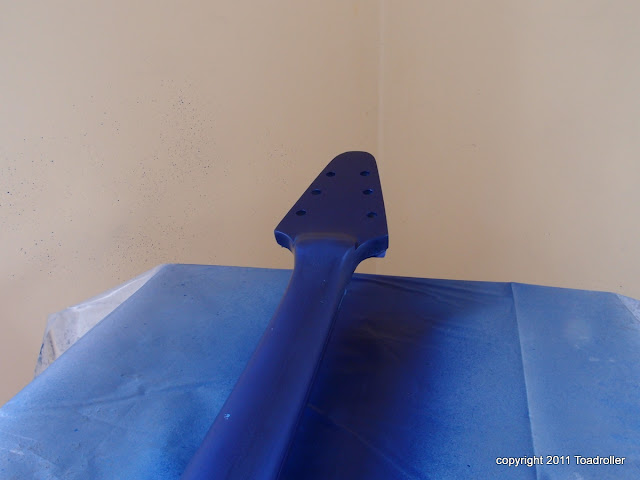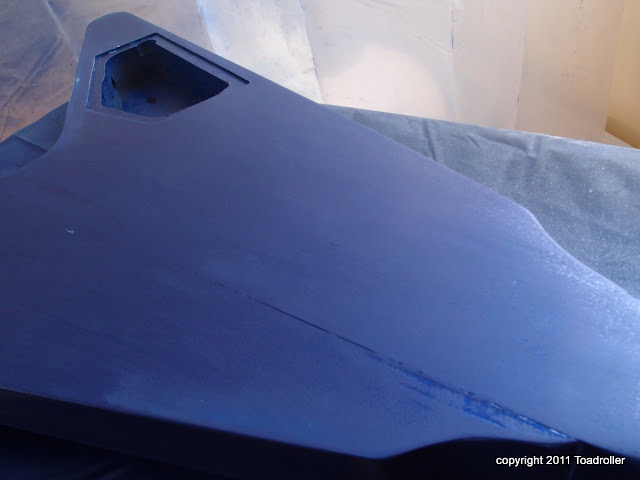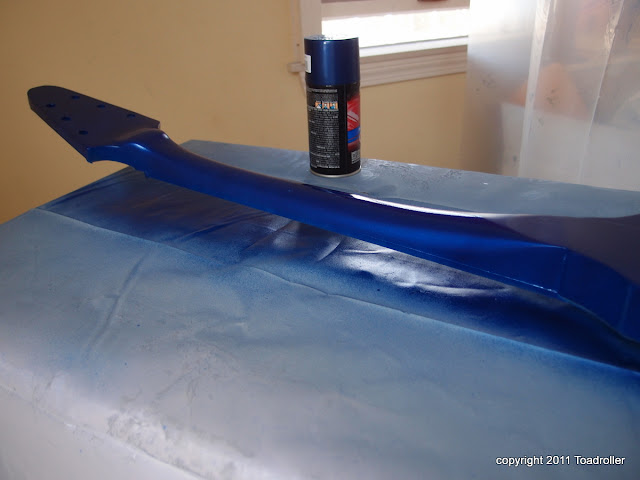It had been a week of drying, and I could no longer smell paint when I sniffed the guitar, so over the weekend we took the plunge and started sanding.
We started off gingerly wet sanding with 2000 grit, afraid to sand through the clear coat and into the paint or beyond. By the end though, I'd developed enough feel and trust that I was giving it some pretty serious elbow grease with a progression of 1000, 1500, and finally 2000 grit to get it as smooth as I could. Here are the results:
Basically, I did what you do if you spend a late summer afternoon really giving your car a solid detailing.
First, we clean the paint with a cutting compound, also referred to as a rubbing compound. This buffing-out cut through the haze left by the sanding and revealed a thrilling depth and sparkle. Most of the videos I've seen of this step had people using orbital sanders and buffers. I just did it by hand. I trust my hands more than a high speed device for my first effort.
 |
| Looking very promising |
From there, I used a swirl remover/polish and finished off with some wax. The results are fantastic!
 |
| The neck is unbelievable- deep, smooth color. My car is the same color and doesn't look this good. |
 |
| Coming atcha! Look at the reflection on the body. |
I learned quite a bit. You can sand through. Any imperfection in the surface before you paint will be there after you paint. Fillers such as wood fillers, bondo, and grain fillers (sometimes epoxy) take care of this. No I know. I developed a bit of touch and trust in sanding paint. "Rattle-can" results can be stunning.
 |
| I just love the neck on this thing. |
We exercised patience, research, and some risks, and boy were we rewarded. Now it's time to start on the front, which is going to be a quilted top lacewood kind of veneer. It should look fantastic.
























